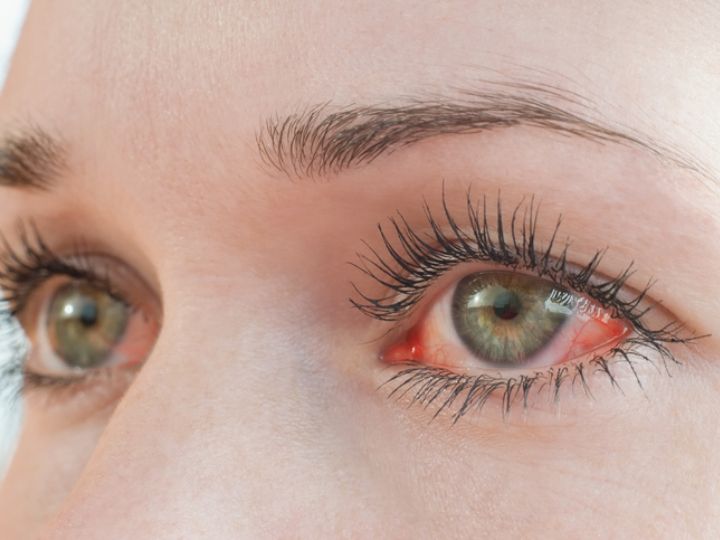All Categories
Featured
Long term exposure to ultraviolet (UV) rays can lead to different eye problems, some of which might result in long-term damage or vision loss. Whether you're outdoors on a sunny coastline or taking a stroll on an overcast day, recognizing how UV rays influence your eyes and learning how to shield them is vital for maintaining healthy and balanced vision.
What Are UV Rays and Just How Do They Impact the Eyes? UV rays are a kind of unnoticeable radiation given off by the sunlight. There are 3 sorts of UV rays:
UVA Rays: These permeate deeply right into the skin and eyes, adding to lasting damage. UVB Rays: These are much more intense and can cause surface-level injury, such as sunburn or corneal damage. UVC Rays: These are one of the most unsafe yet are soaked up by the Planet's environment and rarely posture a straight hazard. Both UVA and UVB rays can harm various parts of the eye, including the cornea, lens, and retina.
Short-Term Effects of UV Direct Exposure. Even a short period of extreme UV exposure can hurt your eyes. An usual condition arising from this is photokeratitis, commonly described as "sunburn of the eye." Signs and symptoms consist of:
Agonizing or red eyes. Sensitivity to light. Too much tearing. Short-lived blurry vision. Photokeratitis is usually short-lived however serves as a suggestion of the immediate dangers of UV radiation.
Long-Term Results of UV Direct Exposure. Cumulative UV exposure with time can bring about several severe eye problems, including:

Cataracts: UV rays increase the advancement of cataracts, a condition where the lens of the eye comes to be over cast, bring about vision disability. Cataracts are a leading cause of blindness worldwide.
Macular Degeneration: The macula, a component of the retina in charge of main vision, can be harmed by extended UV exposure, enhancing the risk of age-related macular degeneration (AMD)
Pterygium: Commonly called "web surfer's eye," this condition entails a growth of cells on the white component of the eye, which can cross the cornea and harm vision.
Pinguecula: UV exposure can trigger yellowish spots to create on the conjunctiva, leading to irritation and pain.
Skin Cancer Around the Eyes: The fragile skin bordering the eyes is extremely prone to UV radiation, raising the threat of basal and squamous cell carcinoma.
Safeguarding Your Eyes from UV Damages. Fortunately is that safeguarding your eyes from UV radiation is easy and effective. Here are some important suggestions:
Put On UV-Blocking Sunglasses. Select sunglasses that obstruct 100% of UVA and UVB rays. Look for labels suggesting "UV 400" protection. Wrap-around styles give additional protection, preventing UV rays from going into from the sides.
Use a Wide-Brimmed Hat. A hat with a broad brim can obstruct nearly 50% of UV rays, providing additional security for your eyes and the delicate skin around them.
Stay Clear Of Peak Sunlight Hours. UV rays are best between 10 a.m. and 4 p.m. Minimize your exterior direct exposure during these hours, or guarantee you're properly shielded if you need to be outside.
Secure Your Eyes Year-Round. UV rays exist year-round, also on gloomy or snowy days. Snow, sand, and water can show UV rays, magnifying their effects. Make sunglasses a component of your day-to-day regimen, despite the season.
Take Into Consideration UV-Blocking Contact Lenses. Several call lenses now use UV security, which can be an added secure when matched with sunglasses.
Motivate Eye Security for Children. Kid's eyes are extra vulnerable to UV damage since their lenses are clearer, permitting even more UV light to reach the retina. Guarantee they wear sunglasses and hats when playing outdoors.
Set Up Routine Eye Exams. Normal sees to an eye care specialist are necessary for monitoring your eye health and wellness. An eye doctor can identify very early indicators of UV-related damage and suggest solutions, such as prescription sunglasses or UV-blocking glasses customized to your needs.
Final thought. UV rays may be unseen, but their effect on your eye wellness is very genuine. From momentary pain to long-lasting conditions like cataracts and macular degeneration, the dangers of UV direct exposure are also significant to disregard. By putting on UV-blocking sunglasses, restricting your direct exposure throughout top hours, and scheduling normal eye examinations, you can safeguard your vision and delight in the outdoors securely. Keep in mind, your eyes are one of your most beneficial properties-- take the essential actions to secure them from harmful UV rays today.
Latest Posts
Learn How to Save Big on Car Maintenance with Montclare Auto Repair’s Exclusive Deals
Discover Why Chicago Drivers Select Montclare Auto Repair for Trusted Service and Big Savings
Unlock WyHy Federal Credit Union – Top Benefits for Your Financial Success
More
Latest Posts
Learn How to Save Big on Car Maintenance with Montclare Auto Repair’s Exclusive Deals
Discover Why Chicago Drivers Select Montclare Auto Repair for Trusted Service and Big Savings
Unlock WyHy Federal Credit Union – Top Benefits for Your Financial Success